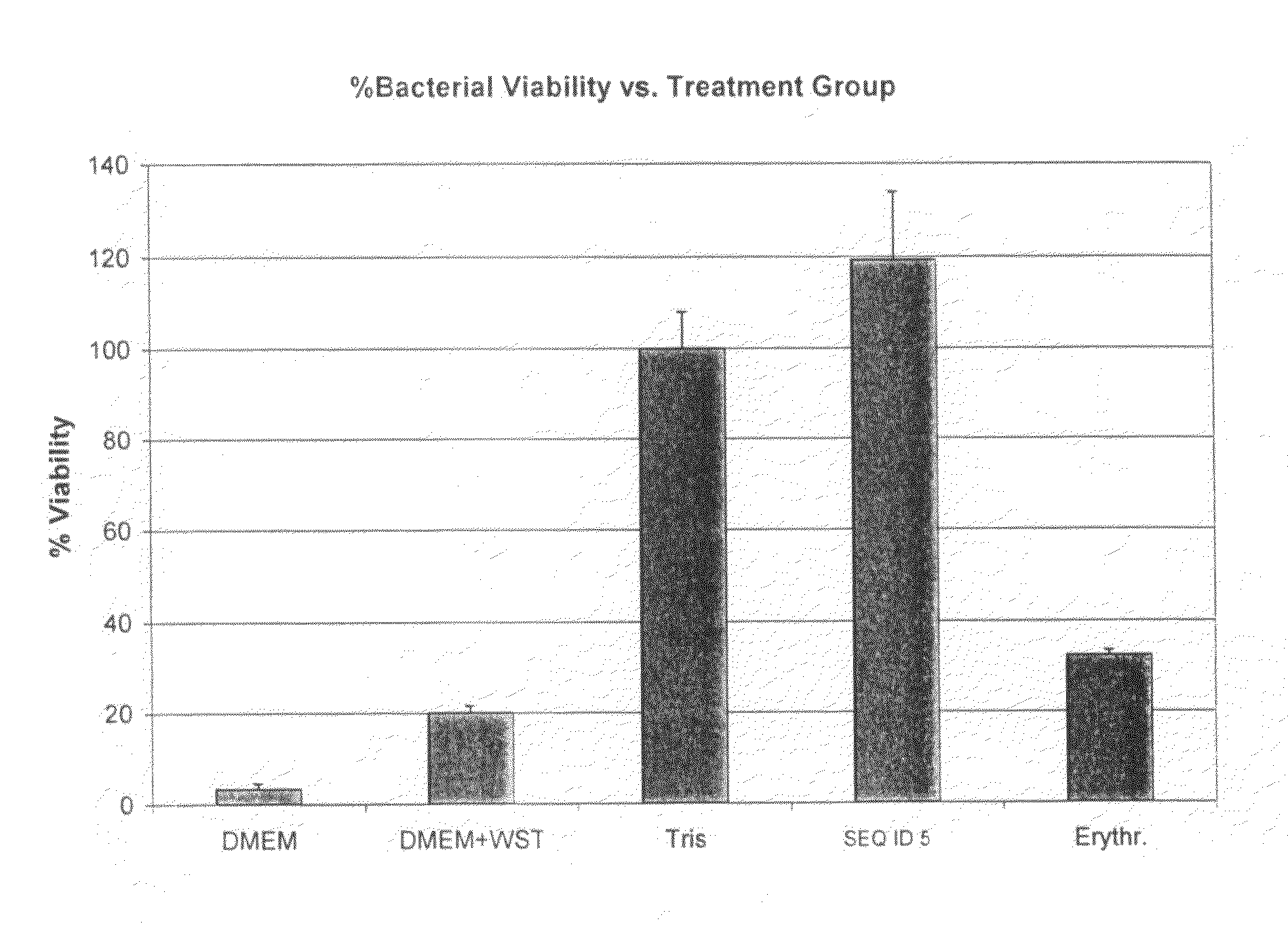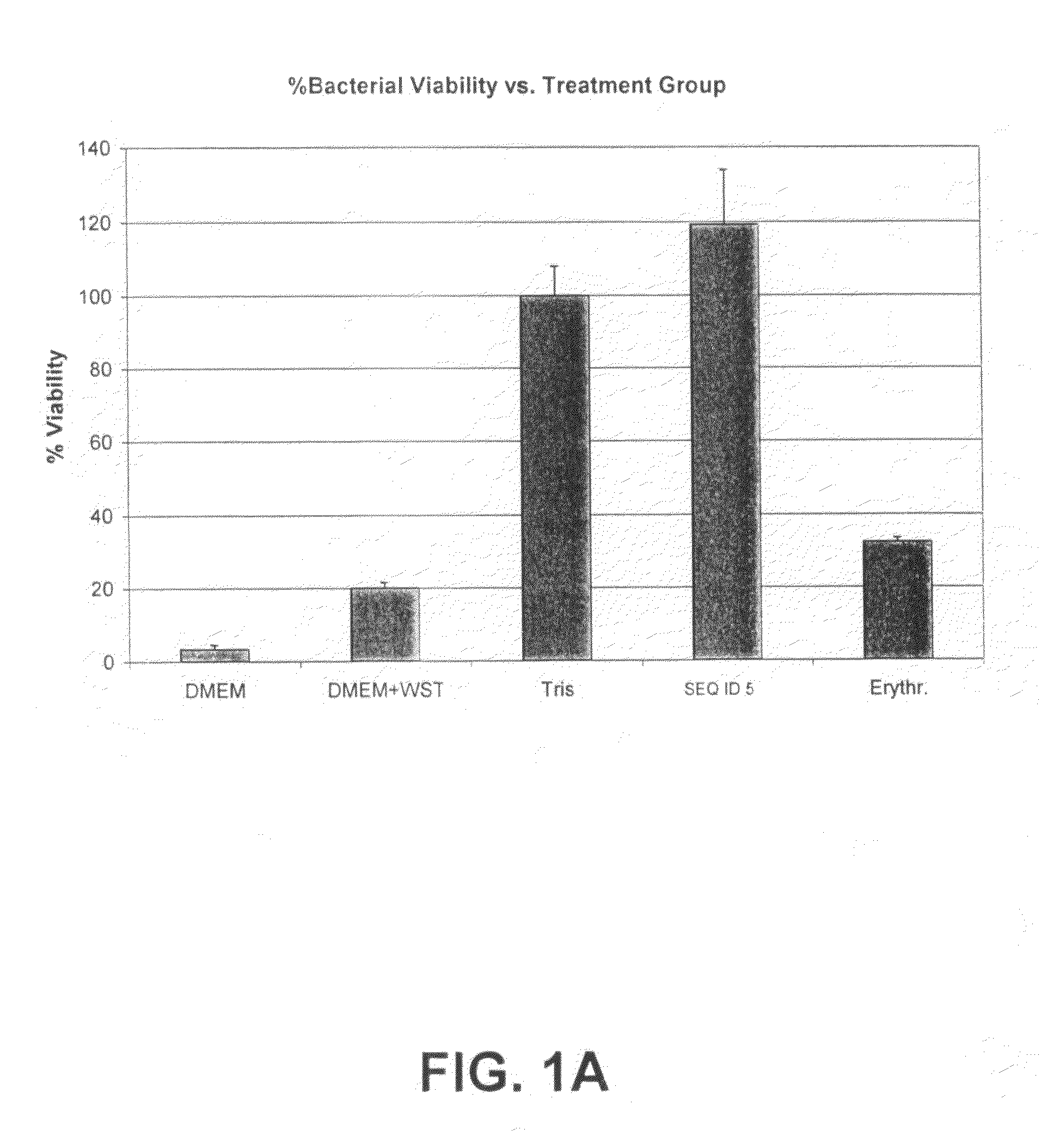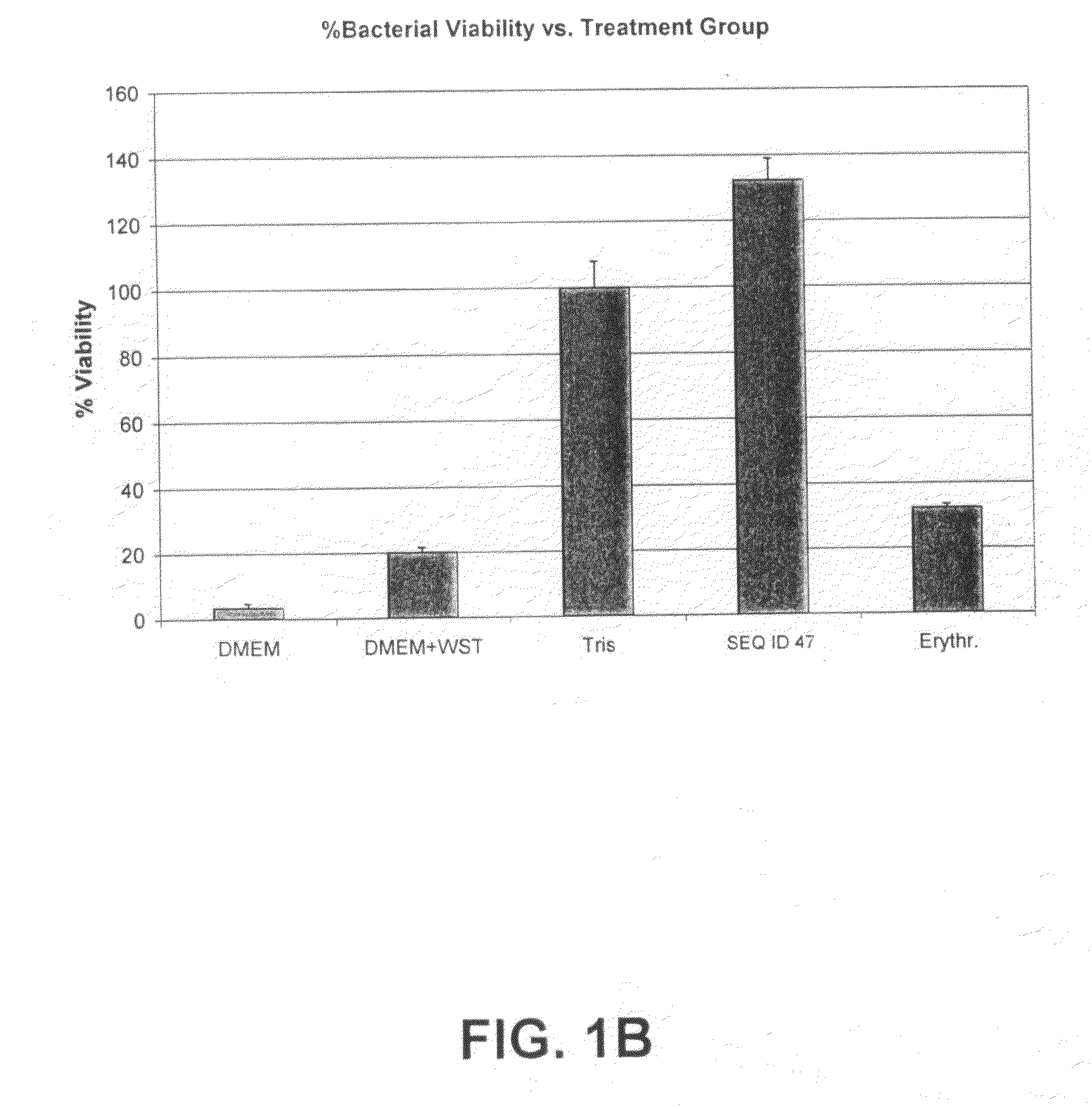Novel peptides for treating and preventing immune-related disorders, including treating and preventing infection by modulating innate immunity
- Summary
- Abstract
- Description
- Claims
- Application Information
AI Technical Summary
Benefits of technology
Problems solved by technology
Method used
Image
Examples
example 1
Peptide Synthesis
[0129]The peptides in TABLE 1 were synthesized using a solid phase peptide synthesis technique.
[0130]All the required Fmoc-protected amino acids were weighed in three-fold molar excess relative to the 1 mmole of peptide desired. The amino acids were then dissolved in Dimethylformaide (DMF) (7.5 ml) to make a 3 mMol solution. The appropriate amount of Rink amide MBHA resin was weighed taking into account the resin's substitution. The resin was then transferred into the automated synthesizer reaction vessel and was pre-soaked with Dichloromethane (DCM) for 15 minutes.
[0131]The resin was de-protected by adding 25% piperidine in DMF (30 ml) to the resin and mixing for 20 minutes. After de-protection of the resin the first coupling was made by mixing the 3 mMol amino acid solution with 4 mMol 2-(1H-benzitriazole-1-yl)-1,1,3,3-tetramethyluronium hexafluorophosphate (HBTU) and 8 mMol N,N-diisopropylethylamine (DIEPA). The solution was allowed to pre-activate for 5 minutes ...
example 2
Non-Antimicrobial Activity
[0136]Bacteria (S. aureus 25923) were seeded into wells containing peptide (200 μM), vehicle (Tris), or antibiotic (erythromycin; 120 μg / ml). The bacteria were allowed to grow for 2 hours. Thereafter, bacterial viability was determined utilizing a WST-1 colorimetric viability assay (catalogue number 1 644 807; Roche Diagnostics). DMEM and DMEM+WST-1 were included as background controls. As shown in FIGS. 1A and B, the peptide of SEQ ID NOs: 5 and 47 clearly show a lack of activity, as compared with an antibiotic control.
example 3
In Vivo Protection
[0137]Mice were infected with S. aureus 25923 via intraperitoneal (IP) injection. Four hours later, the peptide of SEQ ID NOs:1, 4, 5, 6, 45, and 47 were administered at 12 mg / kg and 24 mg / kg for SEQ. ID. NO. 1 (FIGS. 2A and 2B), 9.6 mg / kg for SEQ. ID. NO. 5 (FIG. 2C), 13 mg / kg for SEQ. ID. NO. 47 (FIG. 2D), 12 mg / kg for SEQ. ID. NO. 4 (FIG. 2E), 9 mg / kg for SEQ. ID. NO. 6 (FIG. 2F), and 13 mg / kg for SEQ. ID. NO. 45 (FIG. 2G), via IP injection. Twenty-four hours post-infection, surviving animals were sacrificed, and intraperitoneal lavage fluid was plated to determine residual bacterial counts (# colony forming units per ml (CFU / ml)) in the presence and absence of peptide treatment.
[0138]Dead animals were assigned the highest bacterial count of any animal in the study. The peptide of SEQ ID NOs:1, 4, 5, 6, 45, and 47 clearly demonstrated protection, as compared with the control. as shown in FIG. 2 A-G.
PUM
| Property | Measurement | Unit |
|---|---|---|
| Fraction | aaaaa | aaaaa |
| Electric charge | aaaaa | aaaaa |
| Responsivity | aaaaa | aaaaa |
Abstract
Description
Claims
Application Information
 Login to View More
Login to View More - R&D
- Intellectual Property
- Life Sciences
- Materials
- Tech Scout
- Unparalleled Data Quality
- Higher Quality Content
- 60% Fewer Hallucinations
Browse by: Latest US Patents, China's latest patents, Technical Efficacy Thesaurus, Application Domain, Technology Topic, Popular Technical Reports.
© 2025 PatSnap. All rights reserved.Legal|Privacy policy|Modern Slavery Act Transparency Statement|Sitemap|About US| Contact US: help@patsnap.com



